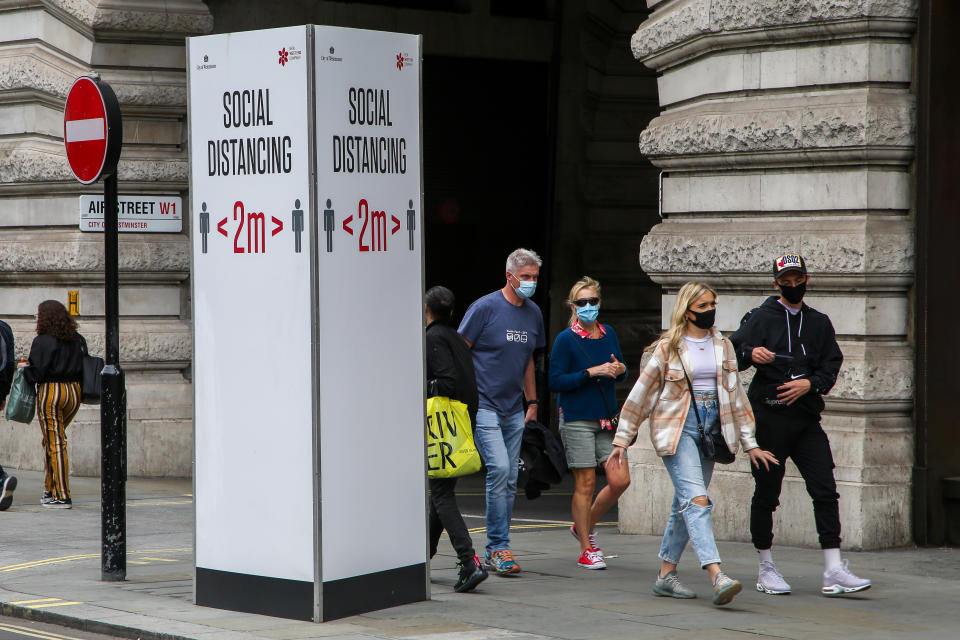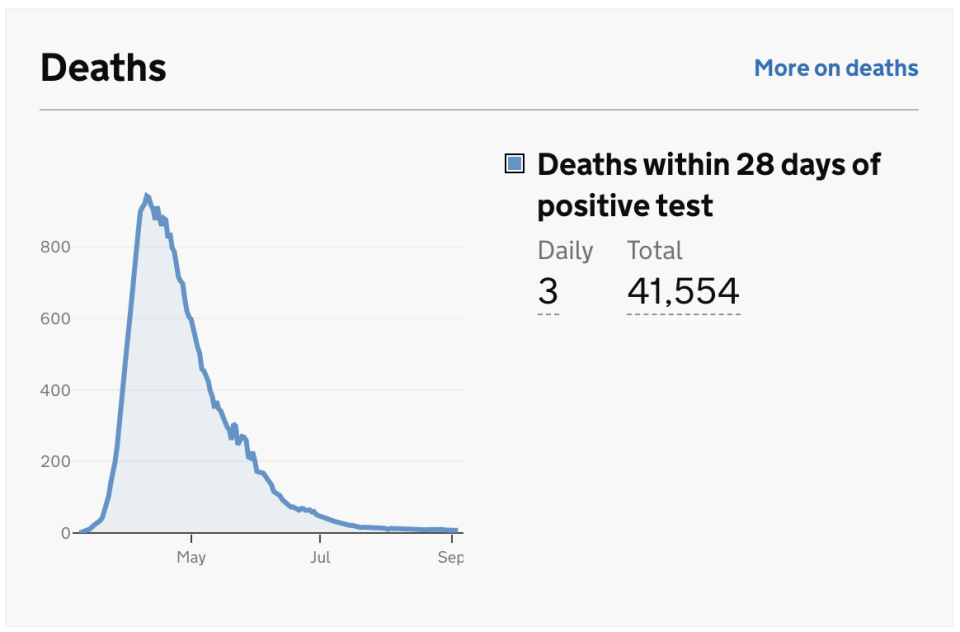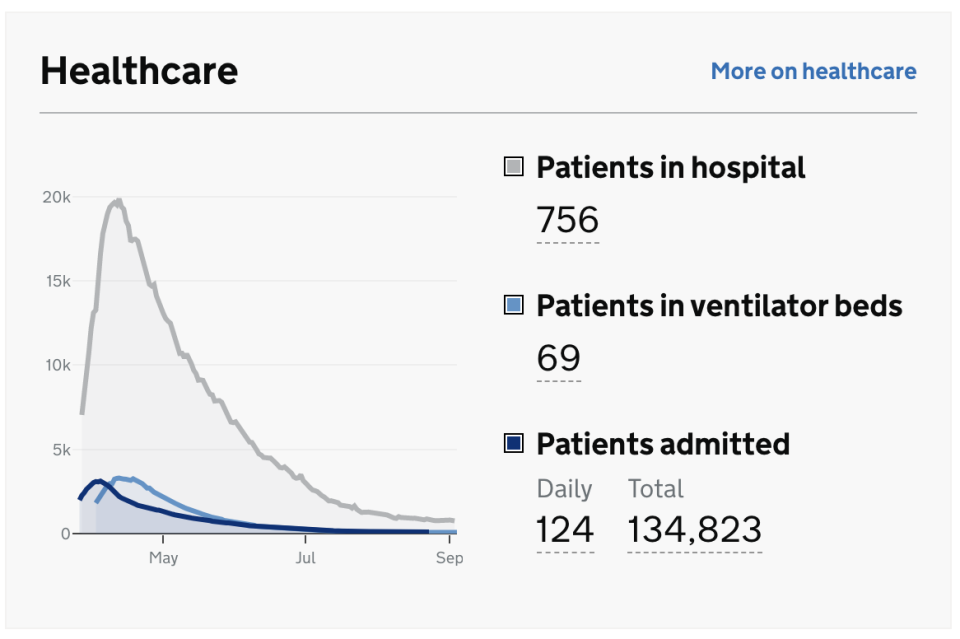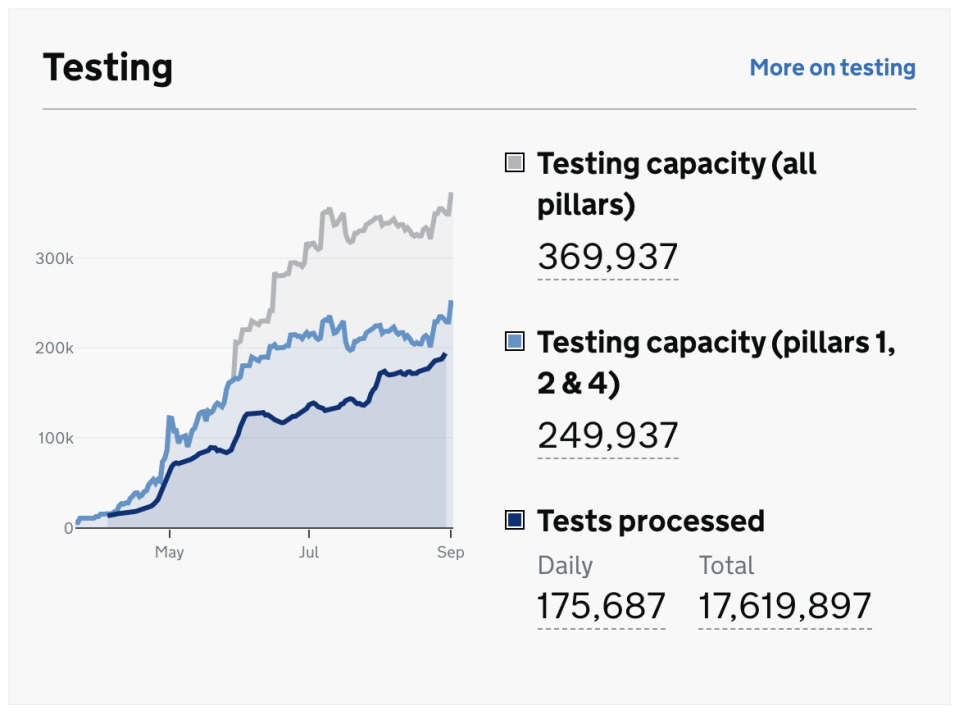4 charts that explain the current coronavirus situation in the UK

Coronavirus cases have risen throughout the UK but deaths continue to remain low, government data shows.
Sunday brought news that 2,988 coronavirus cases had been confirmed over 24 hours, the highest daily amount since 23 May and a massive rise from the 1,813 recorded the day before.
However, the number of COVID-19-related deaths remained low, rising by two.
With restrictions on businesses having broadly been relaxed in the last few months, and children returning to school, fears of a second wave of infections remain, despite the lower mortality figures.
Health secretary Matt Hancock has said demographics may explain why the rise in cases has not yet been accompanied by a rise in deaths and hospital admissions.
Watch: Matt Hancock 'concerned' with rise in Covid-19 cases
Cases are increasing

Comparing the amount of cases being detected today with those from the start of the UK’s outbreak is not simple.
Limited testing earlier in the pandemic means the true number of COVID-19 cases was likely to be higher than the officially recorded amount at the time.
However, the trend is clear to see – the initial spike in infections dropped after lockdown was introduced, and has started to tick upward as relaxations to restrictions have been made.
But health secretary Hancock insisted on BBC Radio 4’s Today programme that the UK is not seeing the same kind of spike that countries in mainland Europe have experienced.
He said: “In other European countries we’re seeing this big second spike. Here the cases are broadly flat, partly because of our Test and Trace system working so effectively, partly because of the quarantine and the social distancing policies.”
But he admitted: “We’re very worried about it.”
New COVID-19 deaths remain low

This new rise in infections has not been accompanied by the number of deaths that followed the previous increase in spring, though.
It is thought the new infections are concentrated in younger people, who are less at risk of dying from COVID-19 – but it has been stressed that they can still be affected by complications and can pass it on.
Hancock told LBC: “The rise in the number of cases we have seen over the last few days is largely among younger people – under-25s, especially between 17 and 21 – and the message to all your younger listeners is that even though you are at lower risk of dying from COVID if you’re under 25, you can still have really serious symptoms and consequences.
“Long COVID – where people six months on are still ill – is prevalent among younger people.
“Also, that you can infect other people – this argument that we have seen that some people come out with saying ‘you don’t need to worry about a rise in cases because it is younger people and they don’t die’ – firstly they can get very, very ill.”
The trend in hospital admissions has not risen either

Official data shows the healthcare system is not experiencing a big resurgence of patients.
The government’s main objective was to prevent the NHS from being overwhelmed with COVID-19 patients, and it took action such as building the Nightingale hospitals.
Government data shows each of the four UK nations’ hospital admissions have consistently been below 100 since the beginning of August.
Nonetheless, Scotland’s first minister Nicola Sturgeon issued a warning on 7 September, pointing to a rise to 22 admissions in the week ending 31 August, up from 14 in the previous two weeks.
Half of these were in the Greater Glasgow and Clyde Health Board area, she said, adding that “it may be that we have to put the brakes on some further changes”.
Testing capacity has risen hugely

There has been a large increase in the UK’s testing capacity, which the government has insisted is crucial to keeping the virus under control.
More testing can lead to more cases being detected.
On 1 April, official data shows 11,896 tests were processed over the course of a day, with a capacity of 15,499. On 2 September, data shows 175,687 were processed in a day, out of a capacity of 369,937.
As the four nations of the UK continue to relax restrictions, with Boris Johnson previously saying he hoped for a significant return to normality by the year’s end, testing, tracing and the isolating of positive cases is seen as key to preventing a return to what happened in spring.
Testing is seen as particularly important ahead of winter, as people move indoors and the added complication of dealing with flu.
Hancock has also said developments in testing, such as a possible 20-minute check, could help with returning people’s lives closer to how they were pre-pandemic.
Video: Yahoo UK’s Health reporter explains how coronavirus is treated
Coronavirus: what happened today
Click here to sign up to the latest news and information with our daily Catch-up newsletter

 Yahoo Sports
Yahoo Sports 
